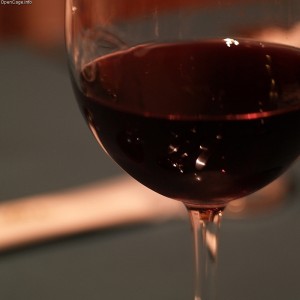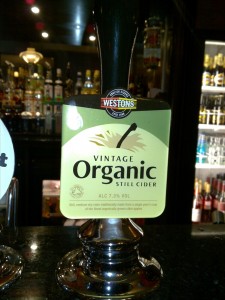The presence and/or absence of sulfites in wine is a continual hot topic in the wine industry, and one which is still relatively poorly understood among many consumers.
Sulfites are used in the winemaking process to act as antioxidants as well as antimicrobial agents, which aid in the preservation and aging potential of the finished wine. Amounts of sulfites added to wines are on average 30 to 90 parts per million (ppm). In addition, sulfites are also naturally present in small amounts in all wines (both red and white). As a result of technological advances, many wineries are experimenting with lowering or eliminating added sulfites in their wines, since the risk of damage to the wine is significantly reduced with modern technology and practices.
Sulfites have been shown to have negative health impacts in humans when present in higher doses. Specifically, several health problems associated with higher levels of sulfites have been reported, including respiratory problems, rashes, stomach pains, headaches, and migraines. However, though these symptoms have been reported after sulfite consumption, research has not yet determined with complete certainty that sulfites in wine are responsible for these negative effects, or if other components of the wine are triggering the reactions.
As a result of these negative health benefits, consumer perception of sulfites in wine is generally negative, which likely isn’t helped by country-specific labeling rules warning consumers of the presence of sulfites greater than certain levels (i.e. 10ppm or greater of sulfites present in wine in the United States requires a warning label).
Based on this knowledge of sulfites and the assumed negative perception of sulfites in wine by consumers, the authors of the paper presented today aimed to evaluate these negative perception, to determine if consumers would be willing to pay more for low-sulfite wines, and to determine if there are any specific groups of consumers that these types of low-sulfite wines could be specifically marketed to for maximum economic benefit.
Methods
Consumer preference for low-sulfite wines was determined using a survey that was sent out to a local wine shop’s customer email list. The survey included some preliminary questions that were followed then by a main choice task. Preliminary questions included demographics (age, income, education level, and sex), typical purchasing behavior, subjective headache experiences, and attitudes toward sulfites. For completing the survey, participants received a $20 wine voucher to the wine shop that gave out their email addresses.
The main choice task included hypothetical wines split up into 12 different “scenarios” with 3 alternatives per scenario. Participants were asked to choose which label was their “most preferred” and “least preferred” wine label out of the three possible choices. Varietal was kept constant throughout an experiment, though in the beginning, participants were randomly assigned to either red or white wine categories.
Quality levels of wine were determined based on their Wine Spectator ratings.
Hypothetical wine labels included an actual “USDA Organic” seal and a “No Sulfites Added” label. A wine could have either one label, neither label, or both labels.
To calculate willingness to pay, participants were randomly assigned to three different pricing groups which were $10-15; $20-25; and $30-35. After participants indicated which wine was their preferred wine, they were asked if they would actually purchase the bottle if it were in the price range to which the participant was assigned.
To not confuse headaches with hangover headaches, participants were asked about their headache experiences only after moderate consumption.
Rather technical mathematical models and statistical analyses were performed on these data, of which I will not get into now for space and time considerations. Feel free to ask questions if you need some clarification.
Results
- There were a total of 223 people that responded to the email surveys.
- 49.78% of survey participants reported owning 10 or more bottles at home, indicating that may be collecting wine for non-immediate use (storing/cellaring).
Headaches
-
34.08% of participants reported having headaches after consuming a moderate amount of wine.
- 60% of those that did not purchase any wines in a month and 50% of those that did not store wine at home attributed the headache experience to wine consumption.
- 63.16% of those experiencing headaches blame sulfites for triggering the pain.
- 57.89% blamed dehydration
- 32.89% blamed red wine
Value/Willingness to Pay
-
Consumers placed a value of $0.64 on wine lacking in sulfites.
- These same consumers placed a value of $1.22 on organic wines.
- A 4-point increase in the Wine Spectator quality score increased consumer willingness to pay by $2.84.
- Differences in quality/score have a greater influence on willingness to pay than organic or low/no sulfites added labeling.
- For consumers placed in the high price category, there were no significant differences in willingness to pay for any wines.
- Participants reporting headaches were willing to pay $1.23 more for a wine lacking sulfites.
- Participating not reporting headaches were willing to pay only $0.33 more for a wine lacking in sulfites.
- Participants reporting headaches were willing to pay more for wines low in sulfites than for organic wines.
- This indicates an obvious “No Sulfites Added” label is important for these types of consumers.
Likelihood of Purchase
-
For consumers in general, an organic wine designation increased the likelihood of purchase by 1.86%, though this was not statistically significant.
- Similarly, wines made without added sulfites increased the likelihood of purchase by 1.72%, again not statistically significant.
- A 4-point increase in the Wine Spectator score of the wine increased the likelihood of purchase by 5.71%.
- A $1.50 increase in price decreased the likelihood of purchase by 5.10%.
- Compared to the lowest price range group ($10-15), those being placed into the mid-range price group ($20-25) decreased their likelihood of purchase by 22%.
- Compared to the lowest price range group ($10-15), those being placed into the high-range price group ($30-35) decreased their likelihood of purchase by 33%.
General Conclusions
- In general, price appears to be of greatest importance to consumers compared to score, organic, and low-sulfite designations.
-
Those reporting headaches, results are similar to the general population in that price and quality appear to be of greatest importance.
- This group does appear to be the best group to market low-sulfite wines to, as they were the group that was willing to pay the most for these types of wines.
- Those suffering from headache are 3.41% more likely to purchase low/no-sulfite wine than non-headache suffers (only 0.97% more likely to purchase these wines).
- This group does appear to be the best group to market low-sulfite wines to, as they were the group that was willing to pay the most for these types of wines.
Again, it appears as though price and quality are the drivers for consumers when it comes to likelihood of purchasing wines. In fact, a 4-point increase in score on a 100-point scale is 3x more important in the likelihood of purchase than a wine advertised as lacking sulfites. According to the authors, a designation of “low sulfites” may only be useful if the quality is also high, as a wine that is poor in quality will not be purchased even if it is lower in sulfites.
A wine low in sulfites does carry a greater risk of oxidation and spoilage, so producers need to be wary of completely eliminating sulfites from their wine. If it’s marketed in a way that stresses it’s a wine to drink now and not to cellar, then they may be able to strike a safe balance.
One thing I’d be curious about is whether those survey respondents claiming they have over 10 bottles of wine at home are willing to pay more for sulfite-free wines, or if they are part of a different niche in which this concern does not factor into their purchasing decisions. Perhaps those people cellaring wines are not concerned about sulfites; thereby an aggressive marketing strategy aimed at stressing a “drink now” approach may be unnecessary. The results of this study were for the entire population and also the headache suffers subpopulation, and it was not made clear how those storing wine fell into these categories.
There’s a lot to talk about with this study and this type of research in general, but rather than me ramble on and on (too late??), why don’t you tell me what you think about the study? What else would you have liked to see the authors test? Where do you think this type of research needs to head in the future? Please share your comments/questions/discussions!
Source: Appleby, C., Costanigro, M., Thilmany, D., and Menke, S. 2012. Measuring consumer willingness to pay for low-sulfite wine: A conjoint analysis. American Association of Wine Economics Working Papers: Economics 117. Accessed online 09/20/2012.
ISSN 2166-9112
I am not a health professional, nor do I pretend to be. Please consult your doctor before altering your alcohol consumption habits. Do not consume alcohol if you are under the age of 21. Do not drink and drive. Enjoy responsibly!


